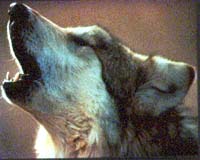 |
Paris, France (ESA) Apr 05, 2011 Submit a great satnav idea and win a prize with ESA support to create your own business. Previous winning ideas today guide visitors around exhibition centres, help position offshore ships with centimetre accuracy and spot pollution in waterways. The eighth European Satellite Navigation Competition (ESNC) began on 1 April. Inventors and entrepreneurs can propose their ideas on how to use satellite navigation technology in new applications on Earth. The winners will get the chance to turn them into viable businesses with the support from business incubations centres throughout Europe.
Galileo Masters competition becomes global ESNC Many of the thousand-plus ideas submitted have turned into new businesses in Europe. Each region offers a prize to its winners. Special topic prizes sponsored by partners from industry and research add to the euros 1 million prize pool. The best overall idea is awarded the Galileo Master grand prize of euros 20 000 and the opportunity to realise the project during a six-month incubation programme. Other organisations also award prizes. The ESA Special Prize is awarded for the best idea that can be quickly nurtured into a profitable business with the technical and financial assistance from one of our five, soon to become six, ESA Business Incubation Centres. The winner will also receive a euros 10 000 cash award. ESA prizes lead to business The 2008 winner proposed pseudo-satellites for indoor navigation, where real satellite signals cannot penetrate. French company Insiteo was started and supported by ESA's Business Incubation Centre in, the Netherlands, and ESA engineers to develop its patented solution. Today, Insideo's indoor navigation system is helping the six million annual visitors find their way around Expo Porte de Versailles, the largest exhibition centre in Paris. Two years ago, Tim Springer proposed a computation system that uses GPS and Glonass satnav signals for realtime positioning to centimetre accuracy. Based on ESA's NAPEOS system used in satellite control, it offers higher precision than other commercial packages. Tim's German start-up company is now hosted at ESA's Business Incubation Centre (BIC) in Darmstadt, Germany to complete the system and get the business going. "Our business plan is to commercialise NAPEOS and improve its precision significantly as well as reduce the processing time," explains Tim. Meanwhile, Positim's system is already being used to position off-shore ships and platforms. Last year, the ESA Special Prize went to Rafael Olmedo and Luis Burillo, from Spain's INTA research institute. They proposed using the extreme accuracy of EGNOS (European Geostationary Navigation Overlay Service) to help authorities uncover illegal polluting wastewater flowing into waterways. "Space pays handsomely back. Every euro invested in satellite manufacturing returns tens of euros downstream," explains Frank M. Salzgeber, head of ESA's Technology Transfer Programme Office (TTPO). "We want to squeeze it even more and increase the return of space technologies and systems for daily life applications on Earth."
Farmers helped by new satnav system At the ESA BICs, winners may be assisted by ESA experts and have access to space technologies and laboratories. These centres are located in the Netherlands, Germany, Italy and the UK, with a sixth to open this year in Belgium. But the support does not stop there. TTPO will help the companies to acquire funding through its annual ESA Investment Forum and the ESA-initiated Open Sky Technologies Fund.
ESNC 2011 opening conference The conference will be opened by Carlo des Dorides, the new Executive Director of the European GNSS (Global Navigation Satellite Systems) Agency. Representatives of the competition's sponsors will introduce this year's special topic prizes and all the benefits ESNC can offer participants. Experts will give an overview on financing opportunities and intellectual property rights and outline which sectors and application areas have the most potential. Previous competition winners will be on hand to share their ESNC experience: how did winning the ESNC influence their business, what has happened since winning, and what was the result?
Share This Article With Planet Earth
Related Links ESA's Technology Transfer Programme Office GPS Applications, Technology and Suppliers
 GPS Study Shows Wolves More Reliant On A Cattle Diet
GPS Study Shows Wolves More Reliant On A Cattle DietEdmonton, Canada (SPX) Mar 29, 2011 Cattle ranchers in southwestern Alberta have suspected it for a long time and now, GPS tracking equipment confirms it: wolf packs in the area are making cow meat a substantial part of their diets. University of Alberta researchers tracked wolves to bone yards, where ranchers dispose of dead cattle, and to sites of fresh cow kills. The study was done over two grazing seasons in 2008 and 200 ... read more |
|
| The content herein, unless otherwise known to be public domain, are Copyright 1995-2010 - SpaceDaily. AFP and UPI Wire Stories are copyright Agence France-Presse and United Press International. ESA Portal Reports are copyright European Space Agency. All NASA sourced material is public domain. Additional copyrights may apply in whole or part to other bona fide parties. Advertising does not imply endorsement,agreement or approval of any opinions, statements or information provided by SpaceDaily on any Web page published or hosted by SpaceDaily. Privacy Statement |